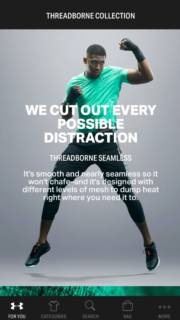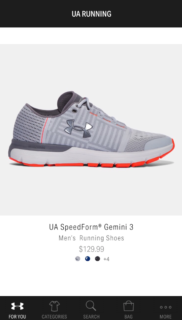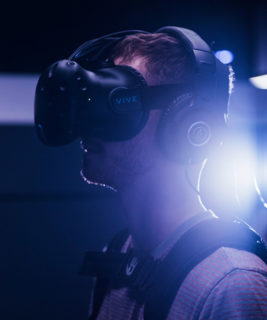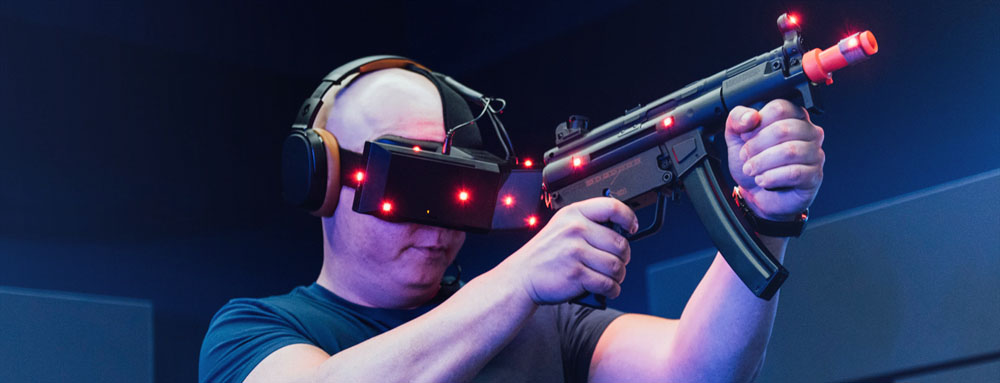The Electronic Entertainment Expo (E3) is the preeminent platform for game publishers and hardware hawkers to present their lineup of products to consumers for the coming year ahead.
Now in its twenty-second consecutive annual installment, video game brands are front-and-center in Los Angeles this week—for the first time ever this year directly with consumers—to showcase and market their catalog of games, merchandise and consoles.
AListDaily surveyed executives from the showroom floor to better understand their strategy and approach for the expo, and whether they still consider it a tentpole event for their respective businesses.
“Every single E3 is different than the previous one. And it’s because we literally start from zero and look at every aspect of the event to ensure that we’re still hitting our marks for our attendees and our exhibitors. Press conferences have long been a staple feature of E3. It’s a great way to kick-off the show. It’s a great way to unveil new products this year, and next. We expect 60,000 to 65,000 attendees this year. E3 is all about what’s new, exciting and experimental. We have more than 250 companies on the floor marketing to their consumers in different ways. What we do is provide them a platform that they can successfully reach their consumers, and their fans. That’s our role. I think it was definitely a good move for us to open the doors and bring the public in. The response has been very positive. If you go down to the floor, it’s very accessible. The lines are very manageable. And I think that the response we’re getting from our exhibitors is only positive. The entire world is focused on Los Angeles right now with E3 and video games. That just underscores E3’s dominance as the global event for computer and video games, whether that’s games on consoles, PC or mobile. It’s all on the floor. And there really is a great diversity not only in terms of the number of our attendees but also in terms of the exhibitors that are in the hall.”
– Dan Hewitt, vice president of media relations and event management for the Entertainment Software Association, the organizing body of E3
“It’s just fantastic to have everyone in gaming in one place. That’s what we use E3 more than anything. Dice is more social. GDC is more about meetings and seeing what’s out there. We’re a fairly new studio, so our main focus is meetings right now. We are still in a pre-launch phase, but we have five games in development right now. The second half of this year will be busy with announcements. At E3, we’re greasing the wheels, per se, and getting everyone ready for our new products. That’s our main focus right now. But we love to see what’s new with all the games. To see it all in one place is fun. We’re also trying to see what’s happening in virtual reality, where the industry is headed and who is doing innovative stuff. I love seeing have indie games are tackling problems like locomotion mechanics and teleporting. That’s my favorite part of E3, and not necessarily seeing the new big game.”
– John Linden, president of Seismic Games
“E3 is always about sharing new trends and technologies and how brands are designing new, and high-quality games. It gives us a chance to work with new titles and ideas while reworking our own strategy for our communities. Although Tencent as a brand does not have presence there, our games do, and Tencent executives are there to meet with other companies to carry on discussions—like how the future of AR and VR will look like in the next two-to-three years. There are still big challenges to make VR more popular to the common gamer. It’s not very easy. We must care about the user, and how to make the process easier.”
– Mars Hou, vice general manager of marketing for Tencent Interactive Entertainment
“For me, E3 is always about touchpoints and connecting with fans, publishers and the gaming community, and checking on what’s coming up on the horizon. We’re getting ready to be a part of some pretty cool announcements with Echo Fox. The fan and gamer in me enjoys it, too, and spending time with my son. We’ve been doing it for years.”
– Rick Fox, former NBA star and owner of esports organization Echo Fox
“We are a passionate team that wants to share with the world that now the coffee standards are changing and we believe the E3 event is a great platform for us to broadcast it and partner with a community of technology lovers. E3 participants are tech savvy and make the most of their lives everyday. In Nescafé Dolce Gusto we share these values.”
– Berta Cruz Corominas, marketing director for Nescafé Dolce Gusto
“We don’t participate inside the show mostly because we’re always focused on independent developers. E3 is not a show that is welcoming to indies. It’s cost-prohibitive on our side of the business. There is a lot of noise from big companies inside the building—and even they come back scratching their heads because of the big budgets they spent. We prefer the vibe and one-to-one approach of doing our own thing and projecting our own image in a controlled environment than yelling over everyone inside. You can put up huge signs and keep turning your music up to compete with the booth next to you, but at the end of the day games like ours have no business being next to a title like Call of Duty. But I’ll still go to check it out and give myself no more than 30 minutes and leave before I self-destruct. A lot of people seem to love it though.”
– Mike Wilson, co-founder of Devolver Digital
“It’s interesting to us to see the platform shifts and where innovation is happening: VR, AR, MR and within the PC and console space. The real pull of esports and the ability to engage large crowds in gameplay voyeurism. We are really taken with the ability to engage communities. We are looking to maximize community involvement in our game build, we look at community build and game build synonymously.”
– Mark Murphy, partner and creative director for Space Media Ventures
“The executive in me will be looking at all of the announcements from our competitors to see how they’re using gaming audio—and how they’re announcing it, like through social media activations and influencers. For us, E3 is a platform to announce new products, and show them off. It is brand driven. We didn’t change gears too much this year with the show open to the public. We dabbled with the idea of trying to sell products, but as much as that sounds neat, it’s not one of those shows where we would move enough volume to justify shipping product. I liked it not being open to the public, and it being an industry exclusive event. But the flip side of the coin, with fans paying their way to come in, they’re the core gamers. We’re looking at it that way from a branding and marketing perspective. I’m also excited that our booth is located near Nintendo. I’m playing a lot of Zelda now, so I want to see what else they’re doing with titles for the Switch beyond Mario Kart. In general, it’s just a cool year for E3 with Microsoft announcing the Scorpio, and how the Xbox Windows Sonic for headphones, which basically makes any headset that connects with Xbox a full, surround sound one.”
– Mac Marshall, senior director of brand, PR and communications for Turtle Beach
“We’re delighted to be at E3. I believe it’s the most important show on the gaming calendar. There are other gaming shows internationally, but E3 still resonates as the destination point to do business and announce new products. E3 is also important to LucidSound, and this year, we’re doubling down by appealing to the core gaming community with our official licensing agreement with Microsoft for the Xbox One and the Xbox One X platforms. E3 is the perfect event that allows us to do just that. We’ll also be looking at new technologies and innovation, which is very important to us. We’ll be monitoring how other companies are trying innovate, what kind of spaces they’re trying to move into and what others are doing in the lifestyle space.”
– Alex Verrey, director of global public relations and communications for LucidSound


 How are you marketing to the elevated levels of newness and customization that are expected from today’s consumer? How do personalized products come into play?
How are you marketing to the elevated levels of newness and customization that are expected from today’s consumer? How do personalized products come into play?
 However, developing a budget-minded pro-level headset created its own problems within the company. Cooper said that they had to ask themselves, “How do we defend our brand as a premium brand while at the same time giving people a more accessibly priced product?” The answer was to address the four issues that players want most from a gaming headset so that they won’t stick to using the cheap speakers built into their televisions. Those features are comfort, durability, audio quality and compatibility.
However, developing a budget-minded pro-level headset created its own problems within the company. Cooper said that they had to ask themselves, “How do we defend our brand as a premium brand while at the same time giving people a more accessibly priced product?” The answer was to address the four issues that players want most from a gaming headset so that they won’t stick to using the cheap speakers built into their televisions. Those features are comfort, durability, audio quality and compatibility.
 The New York IMAX VR Centre is comprised of several 11-foot rooms (referred to as pods) that can be divided into smaller parts for multiplayer events. Experiences include video games such as Eagle Flight and the frenetic shooter Raw Data, while Raising a Ruckus is more of an animated VR movie that is enhanced by seats that tilt and rumble in sync with the experience.
The New York IMAX VR Centre is comprised of several 11-foot rooms (referred to as pods) that can be divided into smaller parts for multiplayer events. Experiences include video games such as Eagle Flight and the frenetic shooter Raw Data, while Raising a Ruckus is more of an animated VR movie that is enhanced by seats that tilt and rumble in sync with the experience.
 Does that philosophy also apply to the VR technology itself as it advances?
Does that philosophy also apply to the VR technology itself as it advances?
